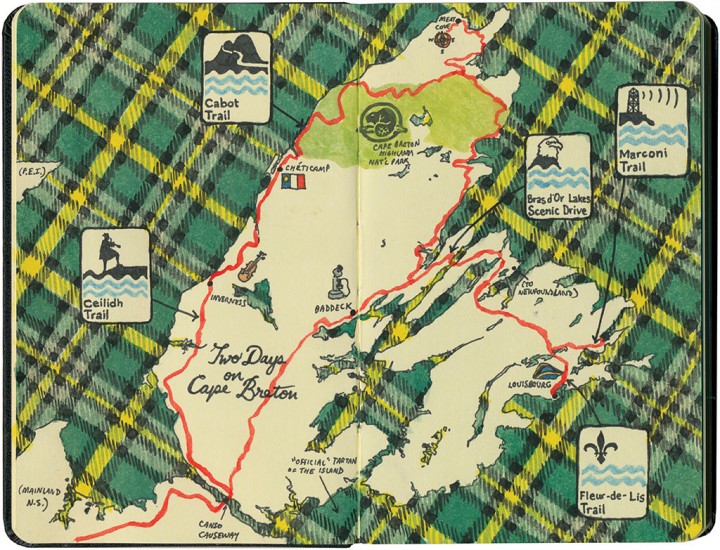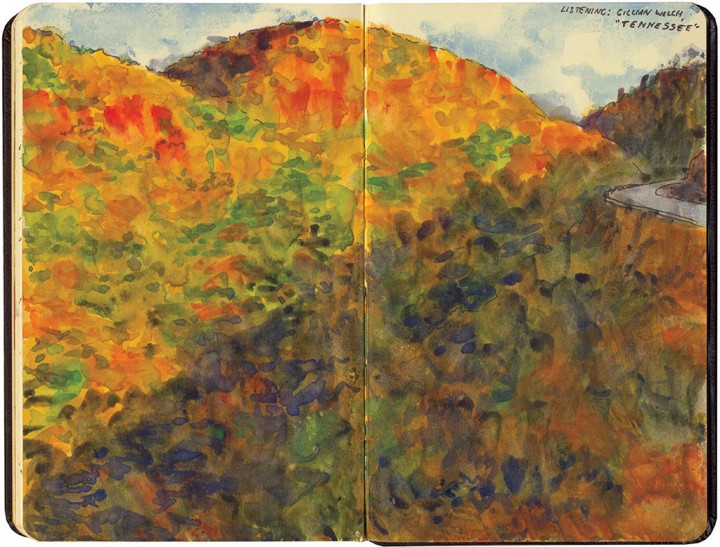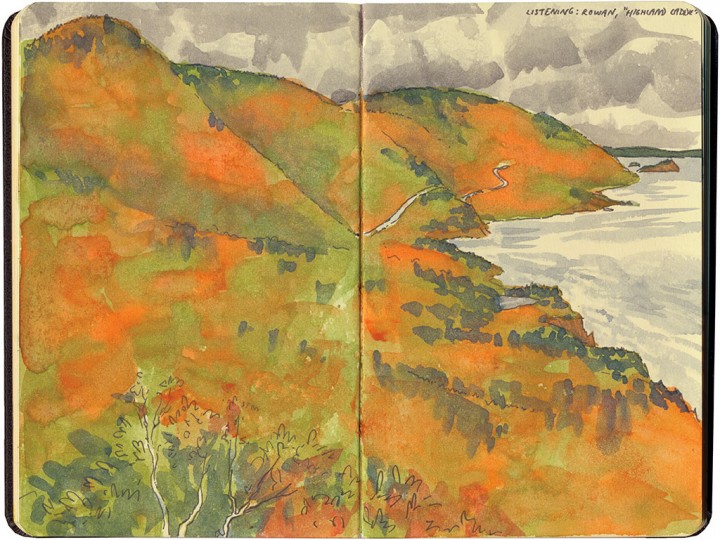Okay, I just have to say it: I usually have mixed feelings about historical reenactments—even the best ones. While I love the idea of immersing myself in a time and place, costumed interpreters (for all their talents and lovely enthusiasm) tend to bug the heck out of me. I don’t know what it is, but all my little tricks and skills for remaining inconspicuous while sketching just fly right out the window at these places. Without fail, the reenacters find me, notice me, and interact with me, when all I wanted to do was disappear and sketch. “Ah! Good lady! I see you are preparing an engraving—” Yeah, yeah. Whatever, that’s nice. If you need me, I’ll be hiding behind this here cannon.

For all my grumpiness (and, in this case, reluctance to reveal my paltry, rusty French), it’s awfully good fun to sketch in a place like that. And I think I may have found the solution to my interpreter-phobia: visit on a bitterly cold weekday, in the off-season, just after a big tour bus of cruise ship passengers leaves for the day.
And that’s how I got to have the entire, enormous village of Louisbourg to myself for a whole afternoon.

I was first drawn to Louisbourg (no pun intended) because I found out that this year marked the settlement’s 300th anniversary. As there aren’t too many places in our little New World that can boast that kind of longevity, it felt somehow important to take part in that, even in my small way.
But also, Louisbourg was incredibly out of the way for me on this trip—it required almost a full day’s diversion to get there and back. Its location on the remote Atlantic shore of Cape Breton made it truly feel like an outpost of civilization (which, of course, it was)—and that’s saying something, as I’d just come from the Cabot Trail. So getting there felt like an accomplishment, like I’d somehow earned a merit badge for my journey.
Either way, all my shyness aside, it felt like I’d had my own private, self-guided tour of the past—and that’s well worth a detour.








